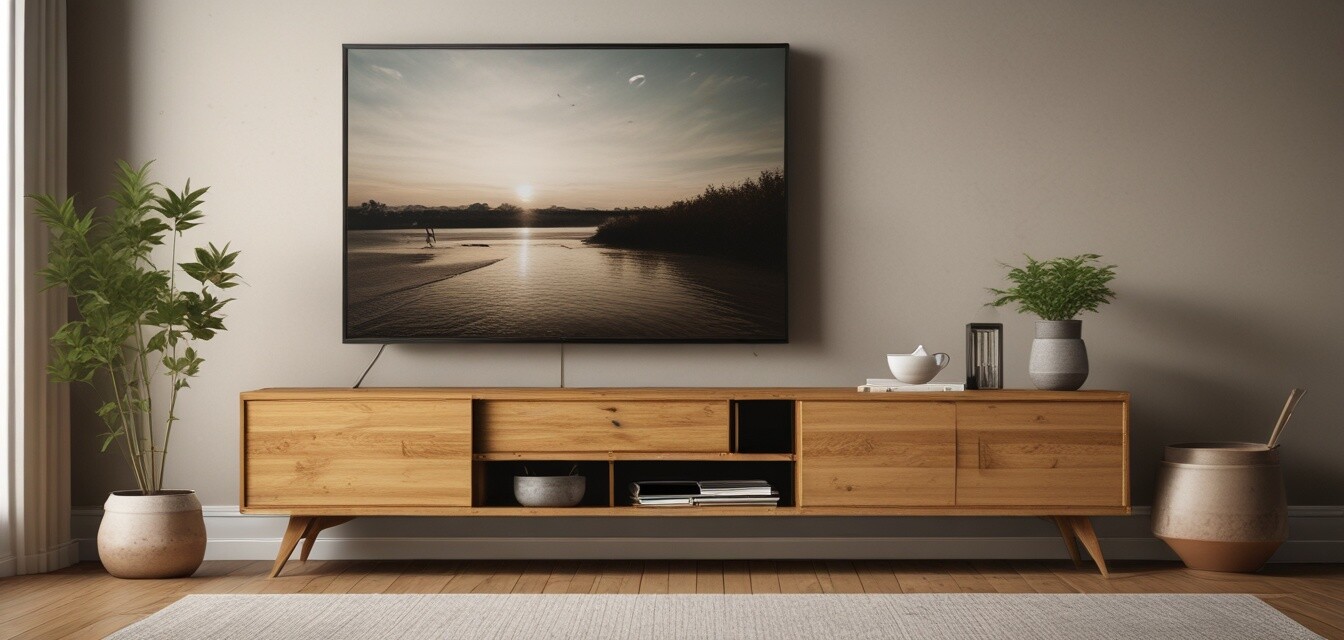
Comparing Materials: Bamboo vs. Reclaimed Wood TV Stands
Choosing the right material for your TV stand is crucial not just for aesthetics, but also for sustainability. In this article, we will delve into the comparison between bamboo and reclaimed wood TV stands, highlighting their benefits, drawbacks, and design options. This guide aims to help you make an informed decision for your home cinema setup.
Key Takeaways
- Bamboo is a highly renewable resource, making it an eco-friendly option.
- Reclaimed wood adds a rustic charm and is often sourced from old buildings or furniture.
- Both materials offer durability, but their care and styling differ.
- Choosing sustainable furniture can contribute positively to the environment.
Understanding Bamboo TV Stands
Bamboo is a grass that grows incredibly fast, making it one of the most sustainable materials available. Its natural properties make it a popular choice for eco-friendly furniture.
| Feature | Bamboo |
|---|---|
| Durability | Highly durable and resistant to warping |
| Weight | Lightweight, easy to move |
| Aesthetic | Modern and sleek appearance |
| Environmental Impact | Fast-growing and renewable; low carbon footprint |
Pros and Cons of Bamboo TV Stands
Pros
- Eco-friendly and sustainable.
- Resistant to moisture and pests.
- Versatile styles ranging from modern to traditional.
Cons
- Can be pricier compared to other materials.
- May require specific cleaning methods.
Exploring Reclaimed Wood TV Stands
Reclaimed wood, derived from old buildings, barns, or furniture, not only offers a unique aesthetic but also embodies a sustainable approach by recycling old materials.
| Feature | Reclaimed Wood |
|---|---|
| Durability | Typically very strong due to age and treatment |
| Weight | Generally heavier than bamboo |
| Aesthetic | Rustic, vintage charm |
| Environmental Impact | Reduces waste by repurposing old materials |
Pros and Cons of Reclaimed Wood TV Stands
Pros
- Unique and distinctive character.
- Contributes to reducing deforestation.
- Solid and sturdy construction.
Cons
- Can have splinters or imperfections.
- May be more expensive due to the sourcing process.
Durability and Maintenance Comparison
When investing in furniture, understanding how to care for it is essential. Both bamboo and reclaimed wood require different maintenance levels. Here's a quick comparison:
| Maintenance Task | Bamboo | Reclaimed Wood |
|---|---|---|
| Cleaning | Use a damp cloth and mild soap. | Use a soft brush to avoid scrapes. |
| Moisture Resistance | Generally good, but avoid prolonged exposure. | Varies; some finishes may need reapplication. |
Styling Options for Your Home Cinema
Both bamboo and reclaimed wood can complement various interior design styles. Here are some ideas:
- Minimalist: Bamboo stands offer a sleek, clean look, perfect for modern homes.
- Rustic: Reclaimed wood fits beautifully in cozy settings with earthy tones.
- Industrial: Combine reclaimed wood with metal for a stylish contrast.
If you’re looking to explore a wider range of styles, check out our sections on corner TV stands and wooden TV stands.
Conclusion: Choosing the Best Option for You
The choice between bamboo and reclaimed wood for your TV stand depends largely on your personal style and environmental values. Both materials offer an array of benefits and can become fabulous centerpieces in your home. By considering the durability, maintenance, and aesthetic aspects, you can select the perfect TV stand that not only enhances your living space but also aligns with sustainable living practices.
For further guidance, feel free to check out our buying guides which provide in-depth information on selecting the best sustainable furniture for your needs.